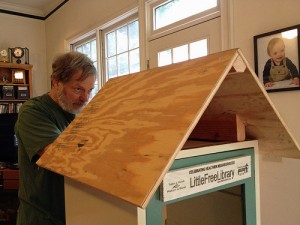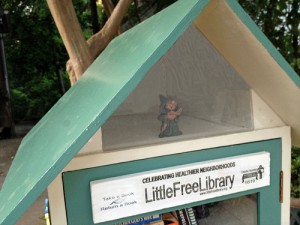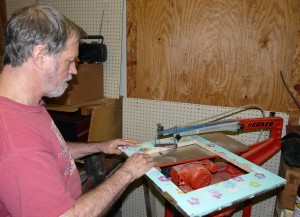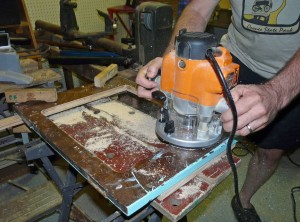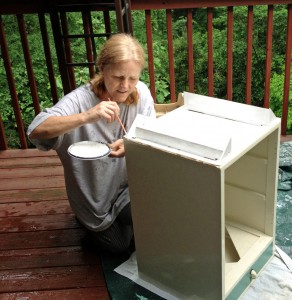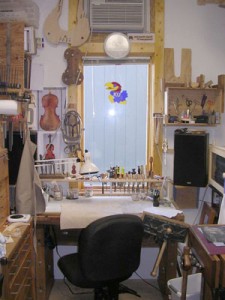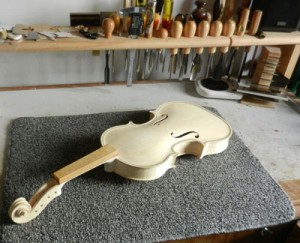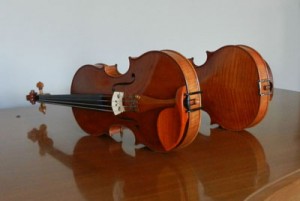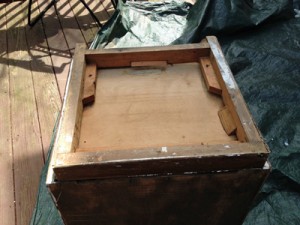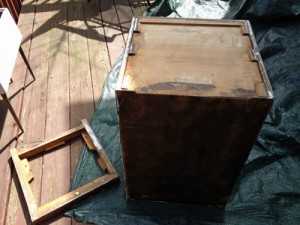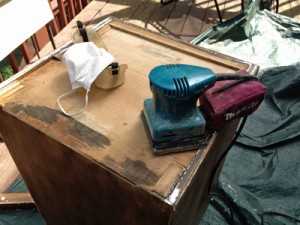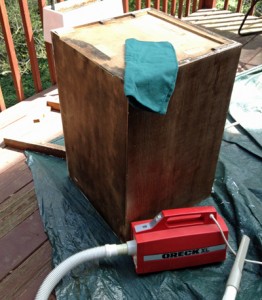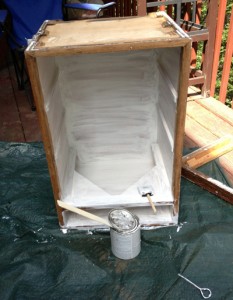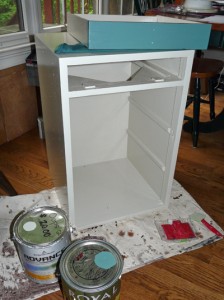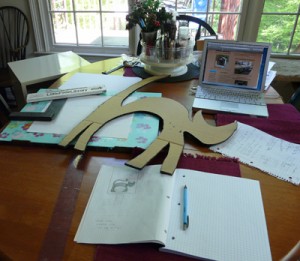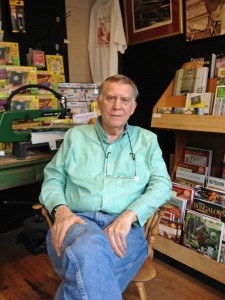A few weeks ago we began blogging about Highland Woodworking owner Chris Bagby and his wife Sanne’s progress with the installation of a Little Free Library (LFL) in their front yard in Atlanta, GA. The Little Free Library is a nationwide community movement project that involves the creation of a birdhouse-sized structure that is placed in your front yard and then filled with books that can be shared with others in your neighborhood. Sanne has been keeping track of their progress through her own blogging and we wanted to share an update on the installation of the rooftop as well as a special little addition to the library.
———————————————————————————————————————-
I scored some spare shingles from a man holding a yard sale in our neighborhood. He was excited to donate to the project. I love the idea of including others in this project – a Little Free Library (LFL) truly can build a sense of community, and it’s not even finished yet! We still have the roof to design and build; the design will be mine and Chris will be doing the building.
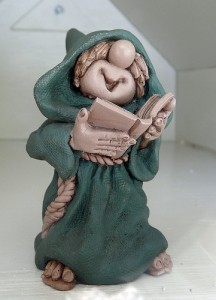 I have a lovely little statue – a rather comical-looking, robe clad fellow with a book in hand. His mouth is wide open and he has a joyous expression on his face. Some may say that he is singing at the top of his lungs; I’m choosing to believe that he is laughing out loud after reading a particularly funny passage in a book – perhaps, a volume by James Herriott?! My intention is to display this amusing little fellow under the eaves of the roof. He can serve as a jolly little patron saint of our LFL, looking over its users with bemusement! This is so much fun!
I have a lovely little statue – a rather comical-looking, robe clad fellow with a book in hand. His mouth is wide open and he has a joyous expression on his face. Some may say that he is singing at the top of his lungs; I’m choosing to believe that he is laughing out loud after reading a particularly funny passage in a book – perhaps, a volume by James Herriott?! My intention is to display this amusing little fellow under the eaves of the roof. He can serve as a jolly little patron saint of our LFL, looking over its users with bemusement! This is so much fun!
With a design in mind, we begin the roof construction. The overhang will be about 4” all around to keep out the rain, per the recommendations provided by the LFL website. Chris finds a spare piece of plywood in our scrap pile, takes careful measurements – twice, of course – and makes the necessary cuts. Getting close-fitting joints and the angles just right takes some figuring, but we are delighted with the results!
We decide that the roof would look better painted in green to match the front door, so we forego using the shingles. A plus is that the LFL will weigh far less without the heavy shingles and still be sufficiently watertight with 3+ coats of paint on the plywood roof and solid wood exterior surfaces. The quarter rounds holding the plexi in place will also be painted green. So, the same procedures follow from earlier construction: sand, prime, paint.
We measure again for another piece of plexi-glass, this time, a triangular shape. At the Ace Hardware store, I learn that they can only cut in quadrangles, so I buy a plastic cutting tool and a remnant of plexi-glass large enough for our needs. Chris makes short work of this cut. After a little trimming with a hand plane, it fits perfectly! We set it in and cut lengths of quarter round to secure the window under the eaves. Our little monk will have a place of honor. We construct a door in the back that will give us access to the “attic” so that we can change out the scene whenever the urge strikes us to do so. I find an old porcelain knob from my collection of “junk-too-precious-to-toss” that will do perfectly for a handle for the back door. (It certainly pays to hang onto something like this for 20+ years!)
Click HERE to continue with the next blog entry in the series with the installation of The Little Free Library into the front yard and final decorations!

